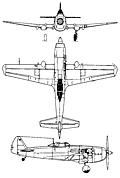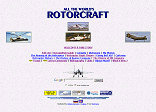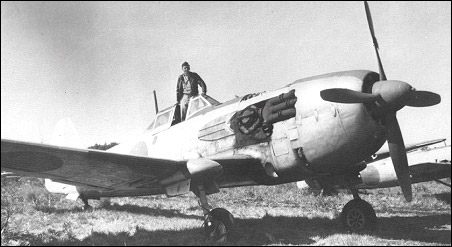|
| The first prototype flew in April 1945. One built.

| CREW | 1 |
| ENGINE | 1 x Nakajima Ha-44 Model 11, 1800kW |
| WEIGHTS |
| Take-off weight | 5632 kg | 12416 lb |
| Empty weight | 4387 kg | 9672 lb |
| DIMENSIONS |
| Wingspan | 13.42 m | 44 ft 0 in |
| Length | 11.82 m | 39 ft 9 in |
| Height | 4.5 m | 15 ft 9 in |
| Wing area | 26 m2 | 279.86 sq ft |
| PERFORMANCE |
| Max. speed | 706 km/h | 439 mph |
| Ceiling | 12850 m | 42150 ft |
| ARMAMENT | 2 x 30mm cannons, 2 x 20mm cannons, 250-kg bomb |
 | A three-view drawing (752 x 1117) |
| Hayate84, e-mail, 11.01.2017 13:01 Real beast of an aircraft comparable in both size and weight to an early model P-47, but not as "fat" looking. Certainly a resemblance, but overall, it's like the P-47's cousin from the city, who has a more fit build from lifting and guzzling protein, and with access to a better clothing tailor as well. Certainly a formidable performer that even early jets should be wary of. Kind of gives off a Japanese Ta-152 vibe, but not quite as fast, (still blazingly quick though) although more heavily armed than the TA with the standard weapons package. Along with Kawasaki's Ki-100,and Mitsubishi's J2M, this was one of the best high altitude interceptors Japan built, and a serious potential problem for B-29 streams had it came earlier and in larger quantity. reply |
| baxie, 21.06.2011 05:43 This little number would've spelled trouble for Allied bombers...and the odd P-47...looks like a very meaty fighter. reply | | Horst Wessel, e-mail, 27.03.2011 20:02 Germans WERE able to produce small turbochargers- or have you forgotten Swiss inventor Alfred Büchi patent 1905.
The first turbocharged diesel truck was produced by Schweizer Maschinenfabrik Saurer (Swiss Machine Works Saurer) in 1938.
Many years before Americans.
The problem was lack of raw ores due to wartime embargo: tungsten, nickel and manganese among others. reply | | DebtMan, e-mail, 01.10.2010 22:37 Hi¡I´am mexican. reply | |
| | John Rohan, e-mail, 22.04.2009 18:42 I want SPAM !! reply | | Hiroyuki Takeuchi, e-mail, 30.01.2009 04:22 The turbo placement on this plane was not very good. Locating turbo so close to the exhaust means very hot exhaust hitting the turbo blades, spelling trouble. Notice how the P-47 and P-38 placed turbos away from the engine. Even the B-17s, 24, and 29s have turbo at the rear end of the engine nacelles. The Japanese engineers also realized this mistake and the more definitive Ki94 high altitude fighter placed its turbo at the rear of the plane like the P-47. reply | | John Rohan, e-mail, 19.10.2008 12:50 The amount of firepower and horsepower on this relatively small plane is astounding. It may not have been able to carry much ammo, but still this would have been one heck of an adversary if Japan had produced it in numbers. Even jet fighters would have steered clear of it. reply | | Civettone, 29.09.2008 16:05 The large size of the turbo doesn't indicate it's powerful but rather that the Japanese were unable to build a compact turbocompressor like on the P-47. Also the Germans had problems with building one (see Fw 190 Kangaru version) reply | | Paul, e-mail, 30.07.2008 05:16 Better turbo placement than on the P-47, sort of like the Lightning.
The "Jug" had its turbo and intercooler inside rear fuse, so lots of ducting going back and forth under the pilot, with heat insulation, etc. Just made it fatter. reply | | Aero-Fox, 31.03.2008 06:38 Look at the turbo! This little number would've spelled trouble for Allied bombers...and the odd P-47...looks like a very meaty fighter. reply |
|
Do you have any comments?
|
| 
COMPANY
PROFILE
All the World's Rotorcraft
|














i would say, more a P47 that chose to skip leg day ;)
reply